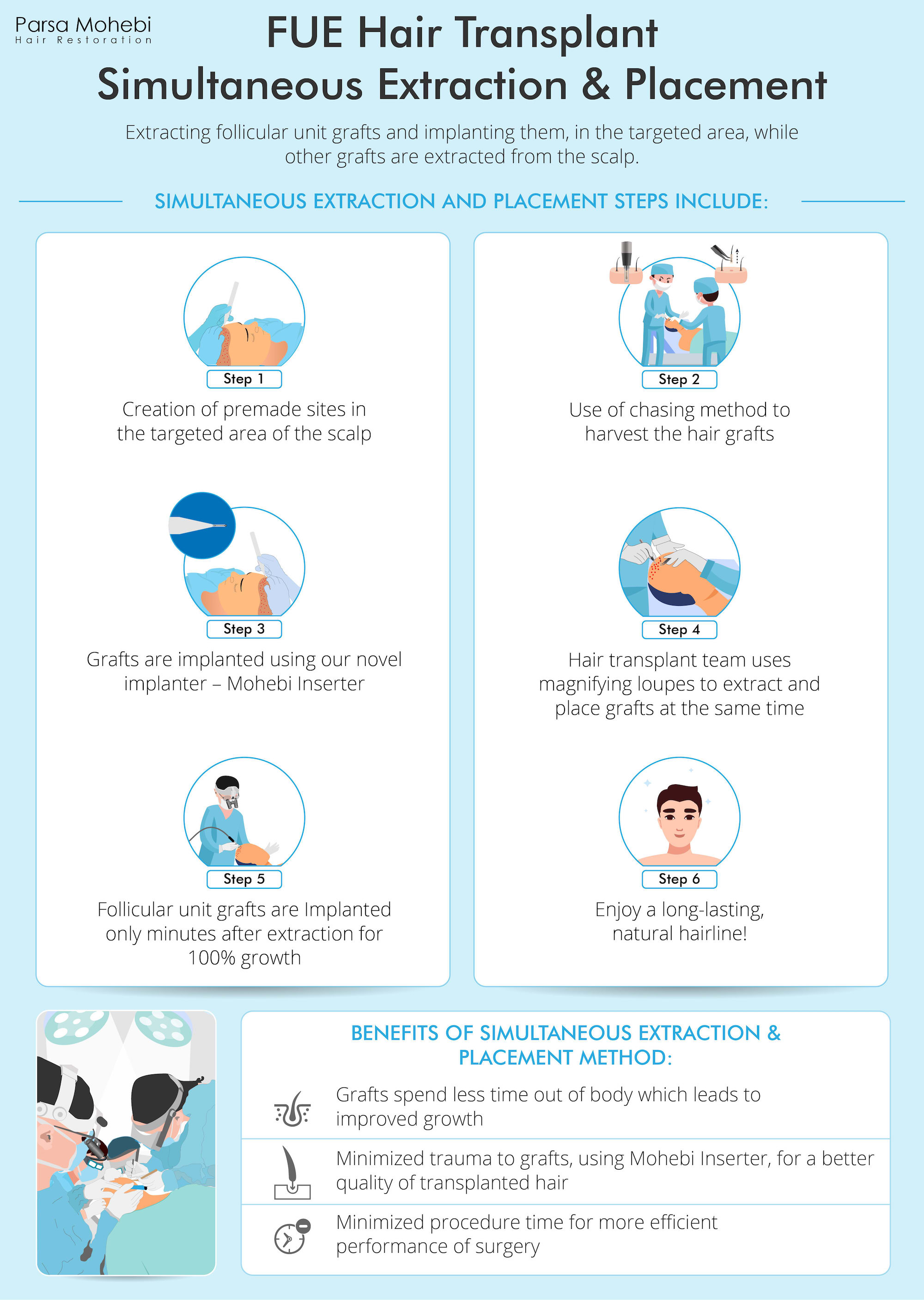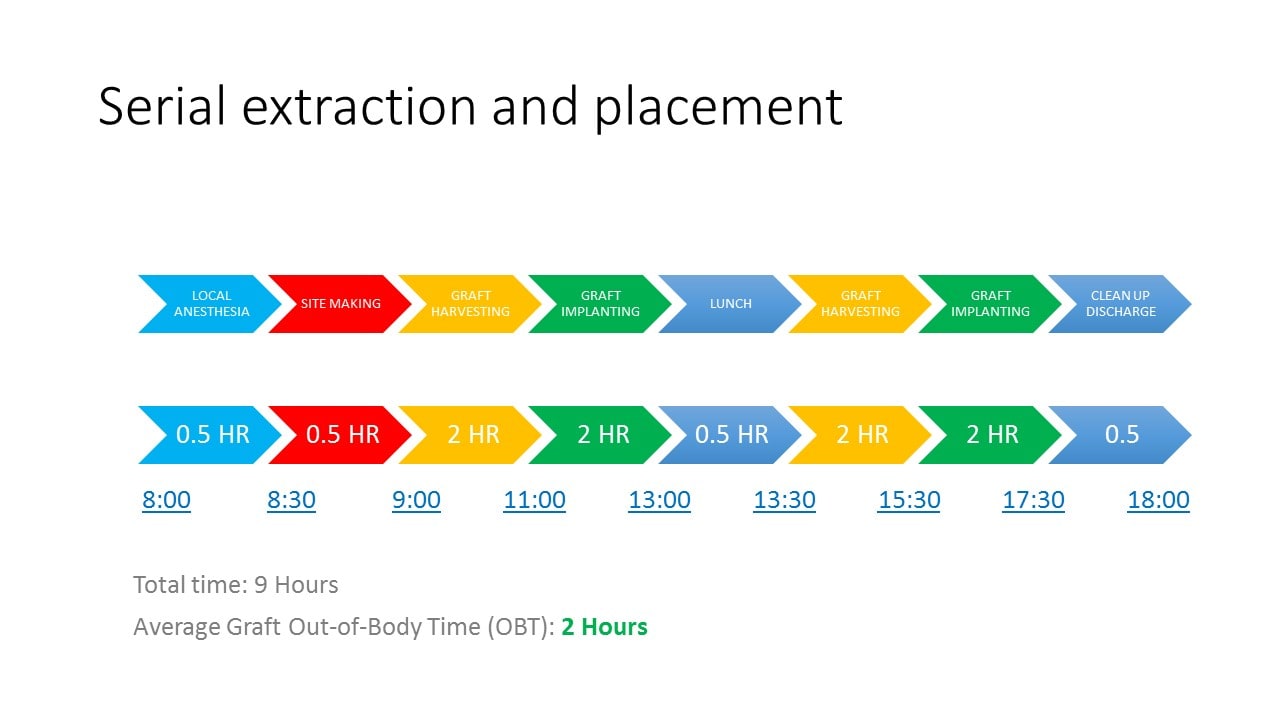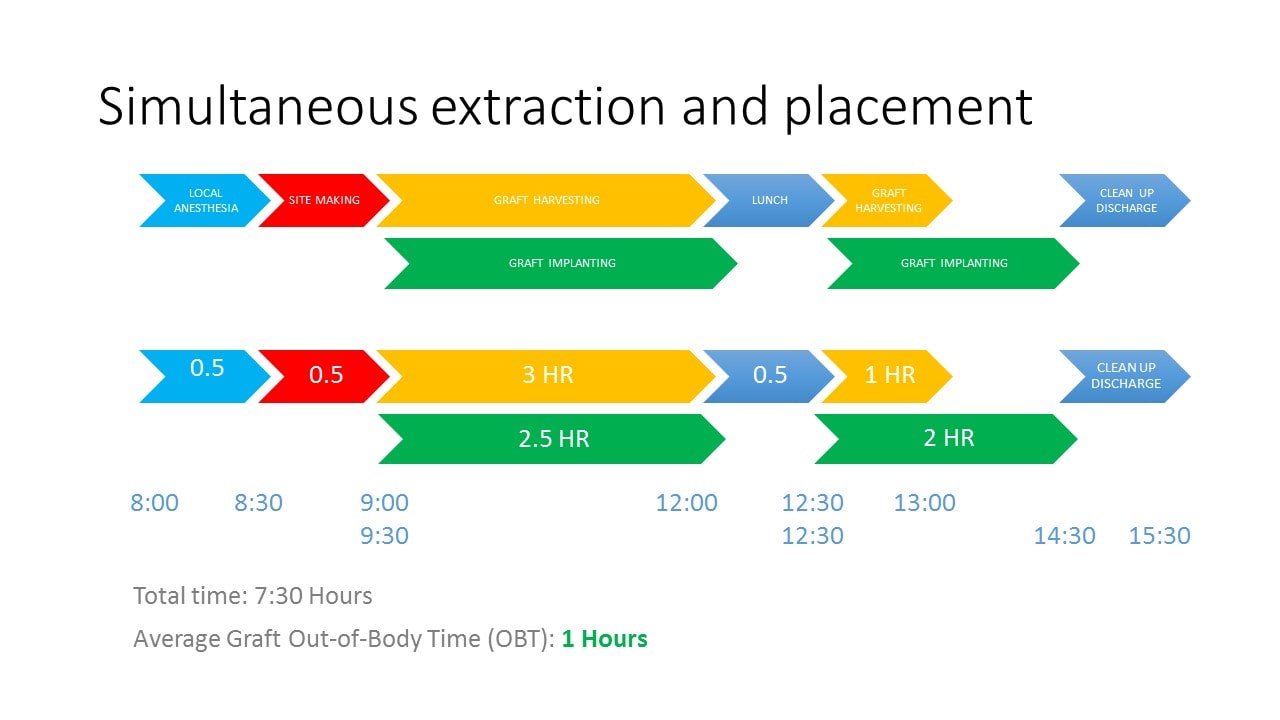Simultaneous Extraction and Placement (SEP) FUE

Simultaneous Extraction and Placement (SEP) of FUE grafts is a novel hair restoration technique that is a more efficient way to promote the overall growth and viability of hair that is transplanted into the scalp. FUE hair transplantation has grown in popularity over the last several years because of the lack of a scar on the scalp after the procedure (as opposed to other hair transplant methods such as Follicular Unit Transplantation AKA FUT). It also provides a higher survival rate for hair grafts since they spend less time out of the body.
In addition to a growth in the number of FUE patients we see on a regular basis, SEP has also provided an increase in the efficiency of our hair restoration procedures. The survival rate of FUE grafts has been the subject of multiple studies in the last few years. Those studies included comparisons of FUT (strip method) and FUE follicular grafts along with comparisons of FUE hair grafts that were placed in the scalp through the use of forceps and implanters. Thanks to the increased amount of information we have gathered about the methods that are available to minimize the manipulation of fragile FUE grafts, we have been able to improve our growth rate even more thanks to Simultaneous Extraction and Placement.
SEP Explained
Here is Dr. Mohebi explaining how he discovered the SEP method as well sharing the benefits of this hair transplant technique:
The hair transplant procedure known as Simultaneous Extraction and Placement FUE is based on some modifications made to our previous hair restoration methods along with additional modifications and updates to some of our equipment. These modifications mean we are now able to implant the extracted follicular unit grafts into the selected recipient areas shortly after they are extracted.
SEP is different from Follicular Unit Extraction (FUE) in that FUE is when the hair grafts are removed from the donor area on the body (usually the back and sides of the scalp) on an individual basis and this process is completed before the hair grafts are implanted in the scalp. There is no simultaneous removal and implantation of grafts during FUE surgery.
In order to provide a better idea about the SEP process, let’s go inside the Parsa Mohebi surgical center for a behind the scenes look at how it is performed and then share the steps of SEP:
When it comes to performing Simultaneous Extraction and Placement, there are several elements involved in the process and they include:
- The creation of premade sites on the scalp
- Chasing method of graft harvesting
- Serial extraction and placement
- The placement of grafts in the premade sites using our novel implanter: Mohebi Inserter (resulting in less trauma to the hair grafts)
- Use of magnifying loupes for a higher focal length

Hair Transplant Evolution
In the past, a hair transplant was traditionally performed through a strip method. This also meant that the initial FUE procedures performed in most hair restoration centers were not too different from the method of extracting and placing grafts that were part of strip procedures. This earlier method consisted of harvesting all of the grafts at the same time and then making sites on the scalp before placing the hair grafts (in the sites). When a hair transplant was performed using this older method, the hair grafts were able to stay out of the body for an average of five hours.
The out of body time was lessened thanks to the use of premade sites in our FUE procedures. In general, the use of premade sites provided a slight improvement in our average out of body time to 4.5 hours.
The next step in the evolution of hair transplant methods at our office was the use of the Serial Extraction and Placement method. This method, initially introduced by Dr. Mohebi to the field of hair transplantation, involved splitting the total time of a procedure between two or three sessions in order to minimize the amount of time that each graft had to stay out of the body. Each session included the surgical team extracting the hair grafts from the donor area on the body (for an hour or two) and this was followed by the placement of the extracted hair grafts into the scalp. The use of the Serial Extraction and Placement method reduced our out of body time of grafts to 2 hours. The shorter amount of time that the grafts stayed out of the body was able to maximize the overall viability of the FUE grafts.


The next step in providing even greater results was changing the orientation of the head so a placer could implant grafts in the premade sites on the head of the patient while the extraction process was being performed. It was quite a challenge at the beginning for the team of three to be able to score and pull grafts while also implanting the hair grafts at the same time. As time passed and our team became more acquainted with the process of extracting and placing at the same time, we were able to improve our flow even more by having our hair transplant technicians use magnifying loupes with a longer focal distance. These magnifying loupes allow our team to keep working with a proper amount of magnification while also maintaining a longer distance from the head of the patient. Our team has now reduced the out of body time experienced by hair grafts to an average of about one hour using the simultaneous extraction and placement method along with reducing the overall time of the hair transplant procedure. There is also a quicker amount of healing time on the part of the patient since the healing process starts when the sites are made (before the placement of the hair grafts).

The simultaneous extraction and placement method is yet another example of how our team has never been willing to settle for “what works right now.” We are constantly striving to improve the quality performance and results of our hair restoration procedures. In order to provide the best results possible, we believe in being at the forefront of hair transplant methods instead of chasing tends and trying to follow what others medical professionals are doing in the field of hair restoration. We remain committed to performing the most high-quality hair restoration techniques that are currently available to our patients. By experimenting and pushing the boundaries of the techniques performed by our team, we are able to give our patients the results they desire and deserve.